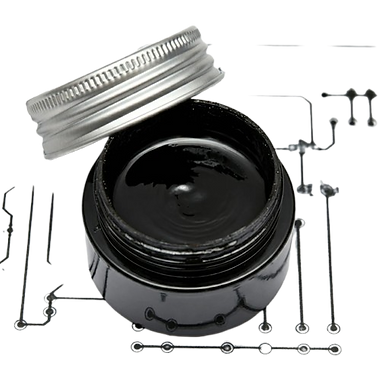Silver, Carbon, Nickel & Copper Conductive Paint – Superior EMI Shielding & Electrical Continuity
Conductive paint infused with silver, carbon, nickel, or copper particles delivers versatile solutions for EMI/RFI shielding, electrical repair, and surface conductivity. Silver conductive paint offers the highest electrical conductivity and shielding performance, ideal for high-frequency applications and circuit repairs—even enabling uniform electroplating on plastics and PCBs. Copper-based paint provides a cost-effective balance, performing well in electroplating and grounding applications with decent conductivity and corrosion resistance. Nickel-filled coatings excel in broadband EMI/RFI shielding, resist corrosion better than copper, and are suitable for plastics—often used in marine environments. Carbon-based conductive coatings, while more affordable and environmentally robust, have higher resistivity, so they’re best for low-frequency shielding, grounding, or ESD protection. Choosing the optimal filler depends on your priorities: price, conductivity, stability, and application method (spray, brush, or pen). For example, silver-coated copper particles offer a strong mix of high-frequency performance and economy. “silver conductive paint,” “copper conductive coating,” “nickel EMI shielding paint,” and “carbon conductive paint” ensures your content ranks for diverse user needs in electronics, DIY repair, and EMI protection.
Key Applications & Uses
-
EMI/RFI shielding & Faraday cages: Restores or creates electromagnetic shields on enclosures or repair of damaged mesh.
-
Circuit prototyping & repair: Great for fixing PCB traces, creating temporary circuits, cold-soldering components, or building paper and fabric circuits.
-
Touch and capacitive sensors: Ideal for DIY sensors like interactive posters or touch switches using Arduino/Touch Board.
-
Electroplating prep: Paints (especially silver or copper) act as conductive primers for plating non-metallic surfaces
-
Wearables & education: Non-toxic paints enable e-textile wiring, educational demos, and interactive craft projects.
Advantages & Benefits
-
Flexible, conformal - Coats uneven surfaces & bends without cracking
-
Adhesive to many substrates - Bonds well to paper, plastics, wood, fabric
-
Multiple application methods - Apply by brushing, spraying, stenciling, screen-printing, or pen tip
-
Conductivity tuning - Varies by filler: silver (best), copper/nickel (mid-range), carbon/graphite (less)
-
EMI shielding & ESD - Offers RF protection, grounding, and static discharge control
-
Non-toxic & water-based options - Safe for classroom/DIY use; easy cleanup with soap and water

